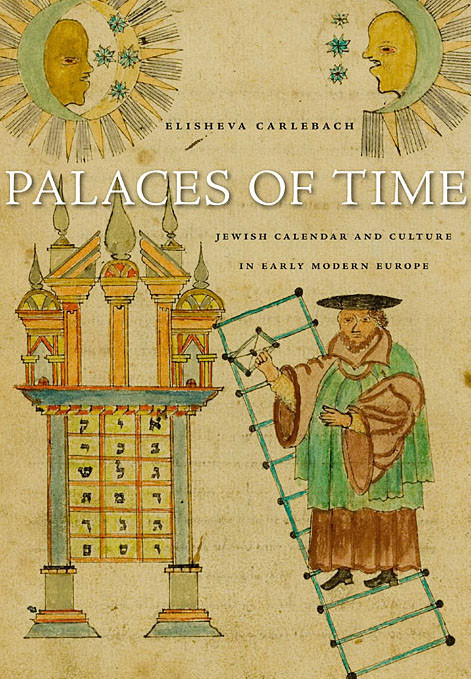Kosher Bookworm: The unique legacy of the Jewish calendar
In his latest weekly Dvar Torah titled, “The Duality of Jewish Time: Parshat Emor” British Chief Rabbi Jonathan Sacks wrote the following observations that are most apt to the book under review this week, “Palaces of Time” by Dr. Elisheva Carlebach [Belknap Press of Harvard University Press, 2011]
Notes the Chief Rabbi, “Time plays an enormous part in Judaism. The first thing G-d declared holy was a day : The Shabbat, at the conclusion of creation. “The first mitzvah given to the Jewish people as a whole prior to the Exodus, was the command to sanctify time, by determining and applying the Jewish calendar.”
The time factor in our religion has guided us in ritual, action and lifestyle since the very beginning of time. And this was no accident.
In her latest work, Dr. Carlebach sets out to teach us the historical as well as theological reasoning and rationales that are the construct and observances of the Jewish calendar of early modern Europe starting from the 15th century.
Utilizing the “sifrei evronot, Jewish calendar/ almanacs to the 18th century Carlebach demonstrates how our beliefs and theology related to both our faith as well as to the lifestyle and calendar demands of our Christian neighbors.”
Throughout this work are to be found a plethora of illustrated works reflecting the religious custom and folklore that was the mainstay of our faith in those times. Interwoven into the text was law, and lore as well as descriptions of Jewish experiences in daily life, personal piety, the role of the Hebrew book as a source of Jewish literature, art, most in full and resplendent color.
It must be realized that most of these calendars were designed for religious use exclusively and their accuracy had to be flawless to reflect the dates and times for all feasts, fasts and times for candle lighting.
The consideration of Christian sensitivities, as well as Jewish religious restrictions in their relationships, especially those of commercial
interest are given a major play in this book. Most of us may be oblivious as to the complicated halachic restrictions that were extant in those times and would find these numerous details as enumerated in this volume to be both fascinating and intriguing in light of our contemporary relationships with our non-Jewish neighbors of all faiths.
One major factor was the Jewish calculus of Christian holidays and the various considerations that Jews in those days had to consider especially in the physically isolated conditions wherein they resided. Also, one must remember that Christianity uses a solar calendar, Islam a lunar calendar while Judaism’s “luach” utilized a fusion of both. This plays a major role in the descriptive and narrative to be found throughout this work.
The scholarship that went into this book is evidenced by the fact that the extensive and detailed footnoting extends to 40 pages, and the bibliography 25 pages making this work a joy for both the professional and amateur researchers among us to would desire to further their knowledge of what goes into the development of the Jewish calendar
This work by Dr. Carlebach, professor of Jewish History at Columbia University, and the daughter of Rabbi Shlomo Carlebach, shlita, the former mashgiach at Yeshivas Chaim Berlin, represents the type of scholarship and methodology that this writer wishes to see in evidence by Jewish publishers when they attempt works dealing with Jewish History, biography, and theology. If only they were to do so, it would truly enhance our people’s study of our faith’s heritage.
Let me conclude this week’s essay with another quote from Rabbi Sacks’ eloquent and timely Dvar Torah of last week.
“In Judaism time is both historical and natural. Unexpected, counter-intuitive, certainly. But glorious in its refusal to simplify the rich complexity of time: the ticking clock, the growing plant, the aging body and the ever deepening mind.”
Time is an ever present factor in our lives, especially for our minds. This is reflected in our faith, where the learning regimen is expected of all of us, and as presented in this week’s review in Dr. Carlebach’s work, and Rabbi Sacks’ teachings.

 61.0°,
Mostly Cloudy
61.0°,
Mostly Cloudy 




